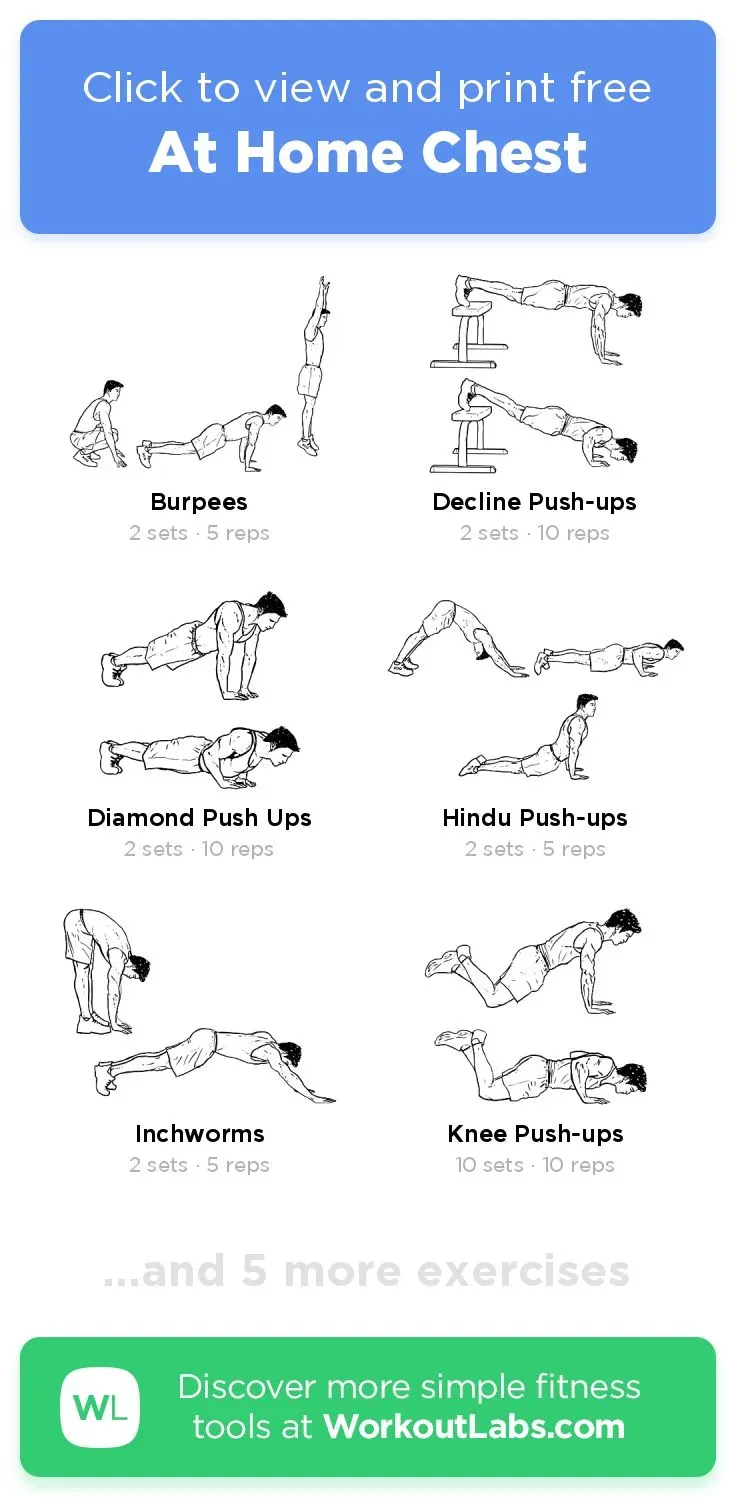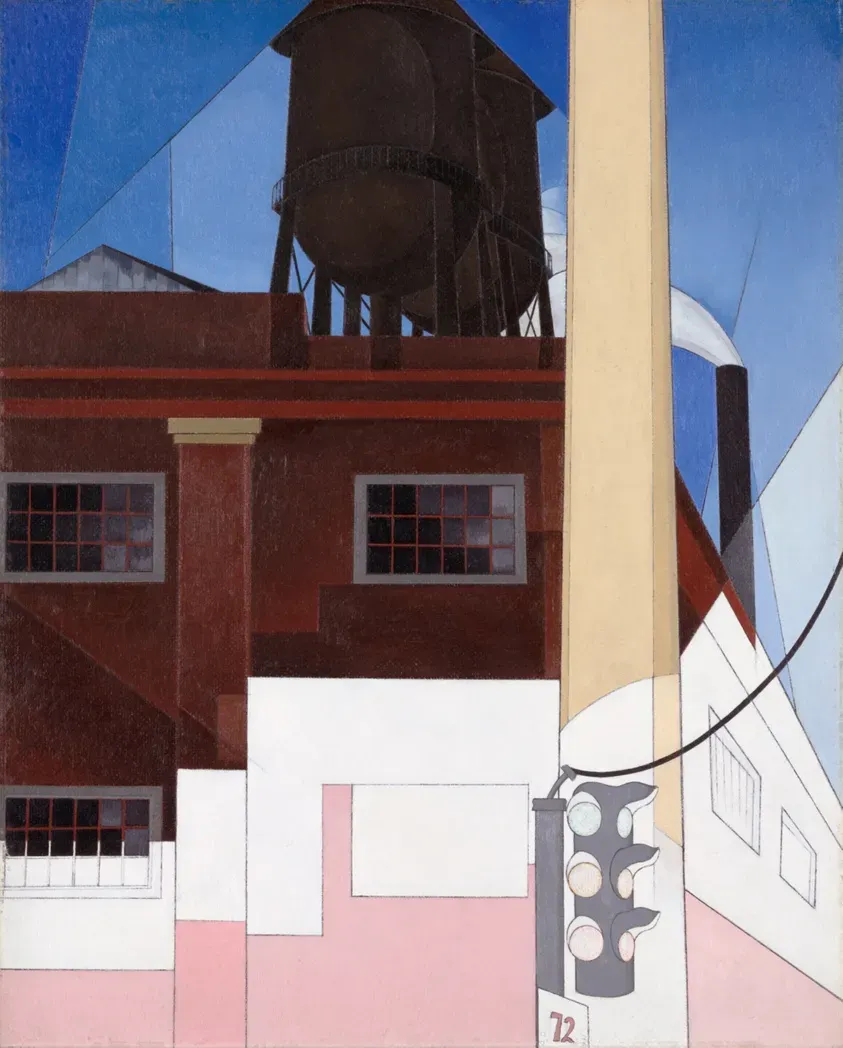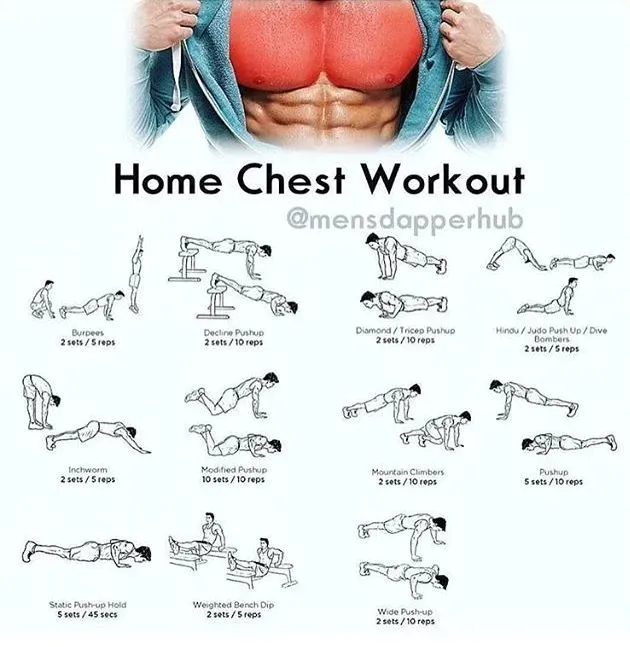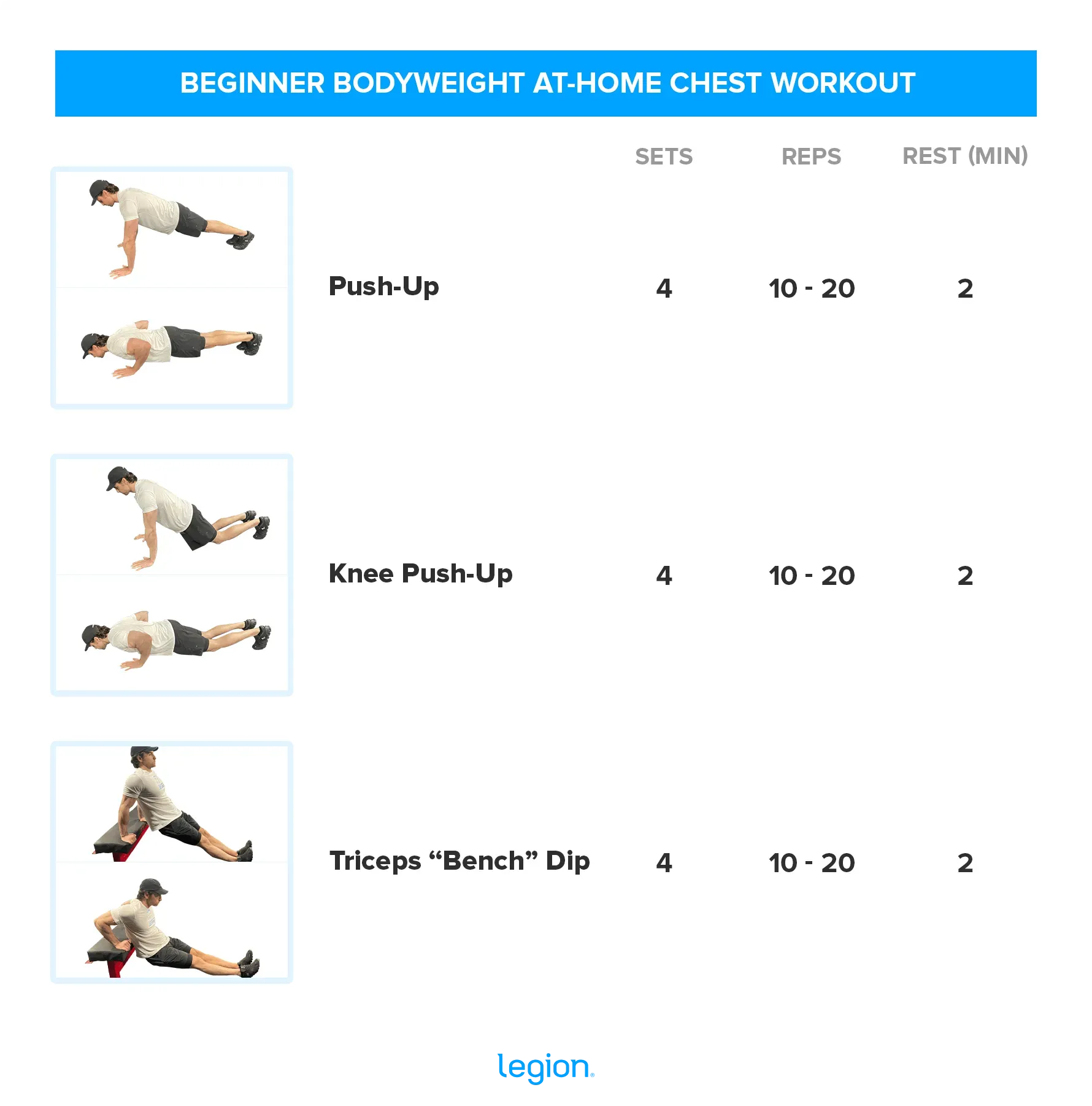Table of Contents
Thinking about building a stronger chest but the gym feels like another planet? Maybe you just don't have the time, the gear, or frankly, the motivation to trek out of the house. You're not alone. A lot of people want to improve their upper body strength, and the chest muscles (your pectorals, big and small) are key players. They help you push open heavy doors, carry groceries without strain, and yes, look pretty decent in a shirt. But where do you start, especially if you're new to this and working out from your living room floor? That's exactly why we're here to talk about a solid chest workout for beginners at home.
Why Bother with Your Chest Muscles?

Why Bother with Your Chest Muscles?
Beyond Just Looking Good
let's be real. A lot of people start thinking about chest workouts because they want to fill out a t-shirt or look solid at the beach. And hey, there's nothing wrong with that goal. But your chest muscles, specifically the pectoralis major and minor, do a whole lot more than just contribute to aesthetics. These aren't just decorative slabs of meat. They're powerhouse muscles crucial for a surprising number of everyday movements.
Think about pushing open a heavy door, lifting a box onto a shelf, or even just properly positioning your arms when you're reaching for something. Your chest muscles are involved in pushing, pressing, and adducting your arms across your body. Neglecting them isn't just about missing out on a 'toned' look; it means potentially making simple tasks harder and setting yourself up for muscular imbalances down the road. Building a strong chest, even with a simple chest workout for beginners at home, is about functional strength.
Strength for Daily Life and Injury Prevention
Ignoring one major muscle group while focusing on others is like building a house with a solid foundation but flimsy walls. It's not going to hold up well. A balanced upper body requires attention to your chest, back, shoulders, and arms. Focusing solely on, say, your biceps, while letting your chest strength lag is a recipe for poor posture and increased risk of shoulder injuries.
Developing strength in your pecs helps stabilize your shoulder joint, which is one of the most mobile, and therefore vulnerable, joints in your body. When your chest is strong, it works in concert with your back muscles to keep your shoulders pulled back and down, counteracting the common tendency to slouch forward, especially if you spend a lot of time sitting. So, a consistent chest workout for beginners at home isn't just about vanity; it's a smart move for long-term joint health and overall physical integrity.
Here are a few daily tasks where your chest muscles pull their weight:
- Pushing open heavy doors
- Carrying or pushing grocery carts
- Picking up children or pets
- Moving furniture
- Throwing a ball
- Pushing yourself up from the floor
Bodyweight Chest Workout for Beginners at Home (No Equipment Needed)

Bodyweight Chest Workout for Beginners at Home (No Equipment Needed)
Starting Strong with Just Your Body
so you're ready to hit your chest muscles but the only equipment you have is... well, your body. Perfect. That's honestly all you need to start building a solid foundation. Bodyweight exercises are incredibly effective for a chest workout for beginners at home because they force you to control your own mass, engaging stabilizer muscles you might miss on machines. They teach you proper movement patterns and build core strength simultaneously. Don't let anyone tell you bodyweight training isn't 'real' training; it's how humans have built strength for millennia. It's accessible, free, and you can literally do it anywhere with a bit of floor space.
Push-Ups: Your Go-To Move
The cornerstone of any bodyweight chest routine is the push-up. It's a compound movement, meaning it works multiple muscle groups at once – chest, shoulders, triceps, and core. For beginners, a standard floor push-up might feel impossible, and that's totally fine. The key is to start where you are and progress. You can modify push-ups by doing them on your knees, or even standing and pushing against a wall or sturdy counter. The goal is to lower your chest towards your hands while keeping your body in a straight line, then push back up with control. Focus on feeling the muscles in your chest contract.
Here are some push-up variations for beginners:
- Wall Push-Ups: Stand facing a wall, place hands shoulder-width apart on the wall, lean in, and push back.
- Elevated Push-Ups: Hands on a sturdy elevated surface like a table, chair, or step. The higher the surface, the easier.
- Knee Push-Ups: On your knees, hands shoulder-width apart, lower your chest towards the floor.
- Incline Push-Ups: Feet elevated on a sturdy surface (like a low step or books), hands on the floor. This shifts focus slightly to the lower chest (use this one once you're comfortable with the others).
Level Up Your Chest Workout for Beginners at Home with Weights

Level Up Your Chest Workout for Beginners at Home with Weights
Adding Resistance for More Growth
Alright, so you've mastered the bodyweight push-up variations and you're feeling ready for a little more resistance. This is where adding some weights comes in handy to really step up your chest workout for beginners at home. You don't need a full gym setup; a simple pair of dumbbells is incredibly versatile. Adding weight provides extra resistance that challenges your muscles in a different way than just using your bodyweight. It allows for deeper muscle fiber recruitment and can accelerate strength and size gains once bodyweight exercises become too easy. Think of it as adding fuel to the fire you started with push-ups.
Here are some fundamental dumbbell chest exercises:
- Dumbbell Floor Press (like a bench press, but on the floor)
- Dumbbell Flyes (on the floor)
- Dumbbell Pullovers (works chest and back)
- Dumbbell Squeeze Press (focuses on inner chest)
Your Complete Beginner Chest Workout Plan & Form Tips

Your Complete Beginner Chest Workout Plan & Form Tips
Building Your Routine: Where to Start
you know *why* you need a strong chest and you've got a few moves in your back pocket. Now, let's put it together into a simple plan for your chest workout for beginners at home. Don't overcomplicate this. Consistency beats complexity every single time when you're starting out. Aim for 2-3 chest workouts per week, allowing at least one rest day between sessions for your muscles to recover and grow. For each exercise you choose (like knee push-ups, wall push-ups, or dumbbell floor press), aim for 2-3 sets.
How many reps per set? That depends on the exercise and your current strength. For bodyweight moves where you can do more, shoot for 10-15 reps. If you're doing a harder variation or using weights, aim for 8-12 reps. The last couple of reps should feel challenging, but you shouldn't be sacrificing form just to hit a number. If you can easily do more than 15 reps with good form, it's time to try a harder variation or add weight.
Mastering the Movement: Form is King
Look, nobody cares how many push-ups you can *almost* do. Sloppy reps don't build strength; they build bad habits and increase your risk of injury. When you're doing your chest workout for beginners at home, especially with push-ups or presses, focus intently on your form. For push-ups, keep your body in a straight line from head to heels (or knees). Don't let your hips sag or pike up. Lower yourself with control, aiming to bring your chest close to the floor (or surface), and push back up powerfully.
Whether bodyweight or using dumbbells, keep your shoulders down and back, away from your ears. Squeeze your shoulder blades together slightly. This helps engage your chest muscles properly and protects your shoulders. Breathe out as you push or press the weight away, and breathe in as you lower it. Don't rush the movement; control both the lowering (eccentric) and pushing (concentric) phases. It might feel slower at first, but it's ten times more effective.
Essential Form Checkpoints:
- Keep your core tight and engaged.
- Maintain a straight line from head to heels/knees (push-ups).
- Lower the weight/body with control.
- Push or press powerfully, squeezing your chest muscles.
- Keep shoulders down and back.
- Avoid flaring elbows out too wide (aim for about a 45-degree angle relative to your body).
Keep Building That Home Chest Strength
So there you have it. Building a stronger chest doesn't require a gym membership or fancy equipment, especially when you're just starting out. A consistent chest workout for beginners at home is completely doable and effective. Focus on mastering the basic movements, pay attention to how your body feels, and remember that progress takes time and consistency, not miracles. Stick with it, keep challenging yourself safely, and you'll see results right from your own space.
